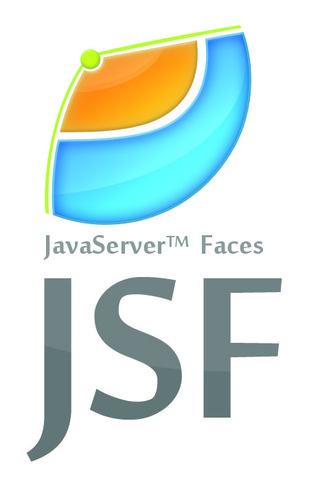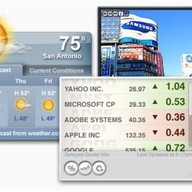NoVDL: Write your JSF views in pure Java |

NoVDL is a View Description Language that makes your JSF views more robust by implementing them in Java. By using Java to write your views you automatically gain many features.
- type safety
- compile-time code verification
- stack traces that actually make sense
- ide autocomplete support
- ide refactoring support
- java static methods for composite components
- java function composition for decorating views
- java inheritance for decorating views
- java object references to access components
- java method references to invoke action listeners
- java namespacing for component libraries
- high performance
- less reliance on flaky EL expressions
- less reliance on managed beans
- no XML configuration, taglibs, or magic annotations
- one language to learn instead of three (Java + XML + EL)
Example View
public class OrderForm extends BasePage implements Activity {
@Override
public void buildView(FacesContext faces, UIViewRoot root) {
List<Product> products = ProductDAO.getAllProducts();
UIPanelGroup main =
h_panelGroup().children(
f_verbatim("<h1>Order Form</h1>"),
h_form().id("order").children(
h_dataTable().id("products").value(products).var("product").width("100%").children(
h_column().header(f_verbatim("Description")).children(
h_outputLink().id("link").valuex("${product.page.linkURL}").children(
h_outputText().valuex("${product.description}")
)
),
h_column()
.header(f_verbatim("Quantity"))
.children(h_inputText().id("quantity").converter(new IntegerConverter())
.footer(h_commandButton().id("submit").value("Create Order")
.actionListener(createOrder()))
)
)
)
);
/*
* If your master template is implemented in java you'll create a
* separate function to build it, e.g.
*
* build_master_view(faces, root, main);
*
* NoVDL also includes a function to execute a facelet which can
* then include the partial view you created here using a
* binding=".." attribute.
*/
build_from_facelet(faces, root, getMasterTemplate());
}
}
Mapping Routes
The current implementation maps the view id to its Java implementation by converting the url path to a class name. E.g.
http://localhost/com/example/Demo.xhtml
is routed to the class
com.example.Demo
If you need different functionality, you could rewrite get_view_class_name() and recompile NoVDL. If there is enough demand, I'll make this function configurable.
Value Expressions
NoVDL allows value expressions to be set by using the setter method which ends in x. e.g.
h_outputText().value("Hello World"); // or
h_outputText().valuex("${bean.greeting}");
This was chosen partly because the NoVDL components are automatically generated from the JSF API, and partly because EL is discouraged in NoVDL. Ideally, we'd like to be able to implement ValueExpressions using lambda functions.
Composite Components with a Static Factory
It is very easy to make composite components using a static factory method.
public static UIPanel create_data_grid(Data current) {
HPanelGrid grid = h_panelGrid().id("ox_related").columns(4);
for (Match match : data.getMatches()) {
HPanelGroup panel = h_panelGroup().id("ox_related_" + match.getId());
if (match.getThumbnail() != null) {
panel.children(
h_outputLink().value(match.getLinkURL()).children(
h_graphicImage().value(match.getThumbnail())
)
);
}
panel.children(
f_verbatim("<p>"),
h_outputLink().value(match.getLinkURL()).children(
h_outputText().value(match.getTitle())
),
f_verbatim("</p>")
);
grid.getChildren().add(panel);
}
return grid;
}
This is a good example of why XML is a questionable choice for user interfaces. Is it declarative code or is it procedural? Actually, it's a mixture, and there is not much advantage to declarative languages when you start to mix in procedural (or functional) code.
Decorating Views using Functions
Same idea as above. e.g.
public static void decorate_view(FacesContext faces, UIViewRoot root,
UIHead head, UIComponent content) {
root.getChildren().add(head);
root.getChildren().add(
h_body().children(
content
);
}
Decorating Views using Inheritance
Function composition is preferred over inheritance. If you like inheritance, all you need to do is make an abstract superclass that defines the sections of your view. e.g.
public abstract class MasterView implements Activity {
@Override
public void buildView(FacesContext faces, UIViewRoot root) {
root.getChildren().add(build_head(faces));
root.getChildren().add(
h_body().children(
build_content(faces)
);
}
public abstract UIHead build_head(FacesContext faces);
public abstract UIComponent build_content(FacesContext faces);
}
Mixing Facelets and Java Views
Use the function
build_from_facelet(faces, root, template);
to execute a Facelet from your buildView function. Inside that template, you'll have to reference the components you built using NoVDL. e.g.
<h2>Current Data</h2>
<div class="web_noprint">
<!-- datagrid is prebuilt with NoVDL -->
<h:panelGroup binding="${someBean.datagrid}"/>
</div>
Editing Views on the Fly
Facelets lets you edit views on the fly without recompiling or restarting the application. You should be able to use HotSwapAgent or JRebel to achieve the same thing with NoVDL.
Installation
NoVDL is automatically detected when you add the following dependency. View IDs that cannot be mapped to Java implementations will fall back on the default view decoration language (normally Facelets).
<dependency>
<groupId>au.com.ninthavenue.jamaica.faces</groupId>
<artifactId>novdl</artifactId>
<packaging>jar</packaging>
<version>1.0</version>
</dependency>
Note: NoVDL requires Java 8.
Get the Source
https://github.com/rogerkeays/novdl
Spend some time experimenting with NoVDL and let me know how it works for you.
NoVDL: Write your JSF views in pure JavaAbout Roger Keays
 |
Roger Keays is an artist, an engineer, and a student of life. He has no fixed address and has left footprints on 40-something different countries around the world. Roger is addicted to surfing. His other interests are music, psychology, languages, the proper use of semicolons, and finding good food. |

